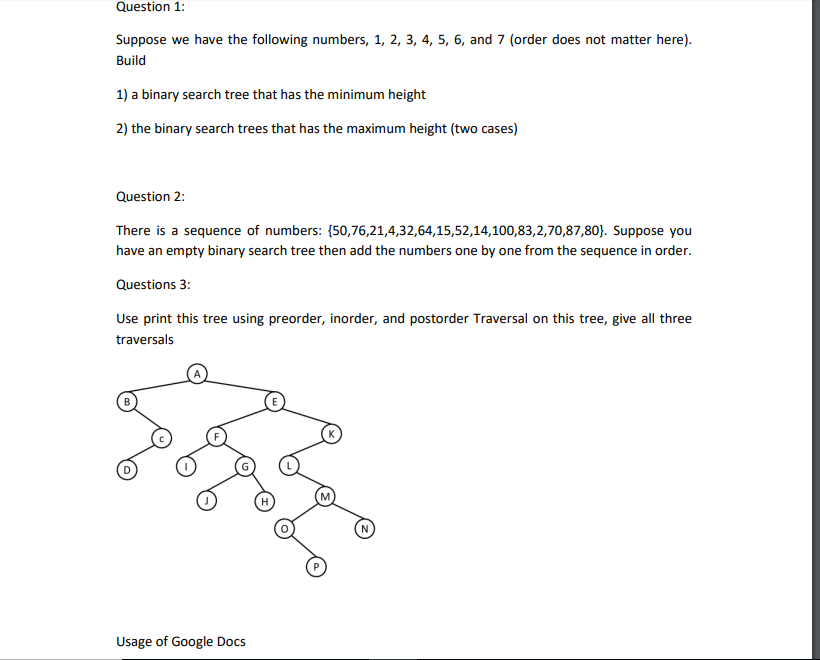Answered step by step
Verified Expert Solution
Question
1 Approved Answer
Question 1: Suppose we have the following numbers, 1, 2, 3, 4, 5, 6, and 7 (order does not matter here) Build 1) a binary

Question 1: Suppose we have the following numbers, 1, 2, 3, 4, 5, 6, and 7 (order does not matter here) Build 1) a binary search tree that has the minimum height 2) the binary search trees that has the maximum height (two cases) Question 2: There is a sequence of numbers: [50,76,21,4,32,64,15,52,14,100,83,2,70,87,80]. Suppose you have an empty binary search tree then add the numbers one by one from the sequence in order. Questions 3: Use print this tree using preorder, inorder, and postorder Traversal on this tree, give all three traversals 0 Usage of Google Docs
Step by Step Solution
There are 3 Steps involved in it
Step: 1

Get Instant Access to Expert-Tailored Solutions
See step-by-step solutions with expert insights and AI powered tools for academic success
Step: 2

Step: 3

Ace Your Homework with AI
Get the answers you need in no time with our AI-driven, step-by-step assistance
Get Started


